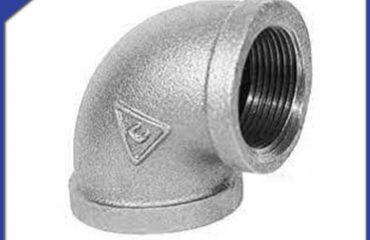Flat welded flange is not common in our daily life, but it plays a very important role, for some people who have just started to understand it should not be too much, in this article, to share with you.
Flat welding flange can be divided into rotary forging, rotary forging, roll forging, cross wedge rolling, ring rolling and cross rolling according to the movement mode of forging die. Rotary forging, swing forging and ring rolling can also be done with precision forging. In order to improve the utilization ratio of materials, roll forging and cross rolling can be used for the front process of slender materials. Rotary forging, like free forging, is also locally formed. Its advantage is that it can also be formed when the forging force is small compared with the forging size. This forging method, including free forging, expands the material from near the die surface to the free surface. Therefore, it is difficult to guarantee the accuracy of the flat welding flange. Therefore, the movement direction of the forging die and the rotary forging process are controlled by computer, and the flat welding flange can obtain the products with complex shape and high precision with lower forging force.
Forged flat welding flange has threaded connection (wire bonding) flange and welding flange. According to the different levels of pressure, flat welding flange pad also has different materials, from low-pressure asbestos pad, high-pressure asbestos pad to metal pad. Flat welding flange connection is the two pipes, fittings or equipment, first fixed on a stainless steel flange, between the two flanges, plus flange pad, fastened together with bolts, completed the connection. Some pipe fittings and equipment have their own carbon steel flange, and also belong to flange connection. Flange connection is easy to use and can withstand great pressure.
Forging flat welding flanges is common in factories, but it is not very common in ordinary families. For some friends, some forging methods of flat welding flange are not very well understood. Here is a detailed introduction to you.
The forging of stainless steel slip on flange can be divided into free forging, upsetting, extrusion, die forging, closed die forging and closed upsetting. Closed die forging and closed upsetting have high utilization ratio due to the absence of flash. The finish machining of complex forgings can be accomplished by one process or several processes. Because there is no flash, the area of forgings is reduced and the load required is reduced. However, it should be noted that the blank can not be completely restricted, so it is necessary to strictly control the volume of the blank, control the relative position of the forging die and measure the forgings, and strive to reduce the wear and tear of the forging die.
 Language
Language Espanol
Espanol English
English Italian
Italian عربى
عربى
 Skype: chinamaker99
Skype: chinamaker99  Tel: 86-316-5120812
Tel: 86-316-5120812 Email:
Email:  Whatsapp:
Whatsapp: 